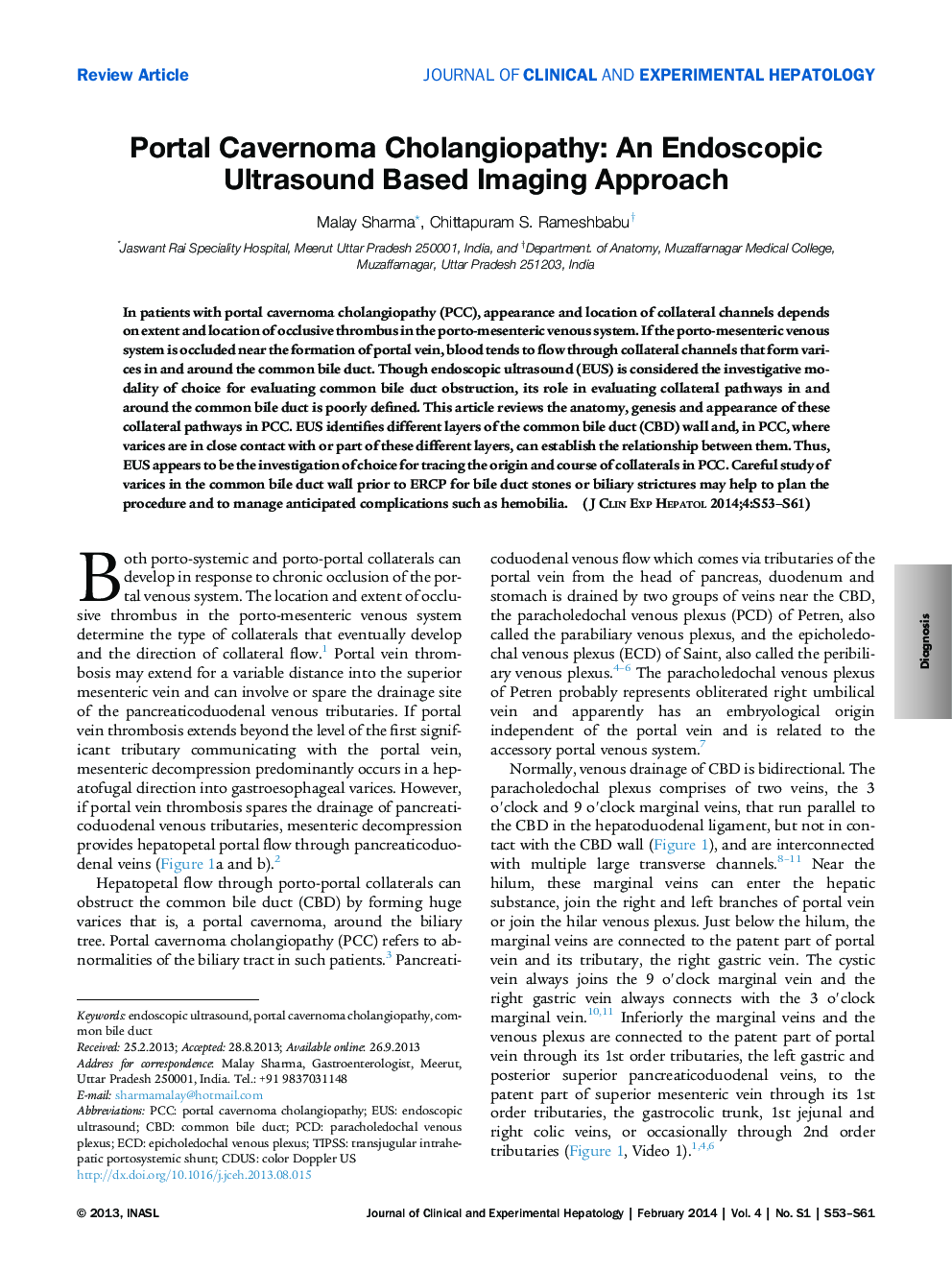| Article ID | Journal | Published Year | Pages | File Type |
|---|---|---|---|---|
| 3338879 | Journal of Clinical and Experimental Hepatology | 2014 | 9 Pages |
In patients with portal cavernoma cholangiopathy (PCC), appearance and location of collateral channels depends on extent and location of occlusive thrombus in the porto-mesenteric venous system. If the porto-mesenteric venous system is occluded near the formation of portal vein, blood tends to flow through collateral channels that form varices in and around the common bile duct. Though endoscopic ultrasound (EUS) is considered the investigative modality of choice for evaluating common bile duct obstruction, its role in evaluating collateral pathways in and around the common bile duct is poorly defined. This article reviews the anatomy, genesis and appearance of these collateral pathways in PCC. EUS identifies different layers of the common bile duct (CBD) wall and, in PCC, where varices are in close contact with or part of these different layers, can establish the relationship between them. Thus, EUS appears to be the investigation of choice for tracing the origin and course of collaterals in PCC. Careful study of varices in the common bile duct wall prior to ERCP for bile duct stones or biliary strictures may help to plan the procedure and to manage anticipated complications such as hemobilia.
